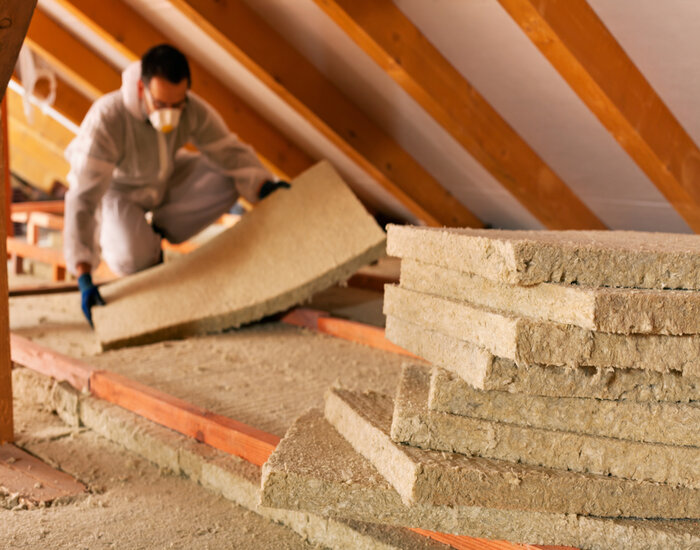
Ever ventured into the dark recess under your home and found wet spots or creatures? If so, you know crawl space insulation is important.
Never had that experience? Let's make sure you never meet a rodent or water leak when examining pipes, or storing boxes in the crawl space.
The crawl space is the area underneath the floor of your home. There isn’t much height, usually enough room to crawl. Most people consider it extra storage space, but it’s more than that.
The area is part of your house structure. It allows air to circulate through the home. It provides access to pipes, electrical systems, and ductwork for maintenance or repair.
A clean, insulated crawl space is essential for an efficient home. Let’s take a look at the benefits of proper crawl space insulation.
It’s important to insulate the crawl space to keep the home structure sound. If moisture builds up inside the crawl space it could spread into the walls.
A lot of water could warp your floors. Mold and mildew grow in damp areas. Groundwater can damage a crawl space.
Vapor barriers and insulation maintain the structural integrity of your home. It protects it from air pollutants, rodents, and termites.
When a structure is sound you can use the area under it for storage. That’s another benefit.
Why rent space at a local warehouse when you can keep possessions close at hand for free? If your crawl space is gross, wet or home to rodents you can't use it as free storage space.
Invest in a professional crawl space clean up to remove debris and old insulation. If the area is clean and easy to access you can store seasonal items, tools, toys, and more.
Crawl space storage eliminates clutter inside your home. You also save the cost and travel time spent on an off-site mini-warehouse unit. Clean and update your crawl space for convenient storage at home.
You don’t want to store anything in a dark, wet space. The main focus of an update to a crawl space is the elimination of water.
Water gathers under your home due to natural groundwater, rainwater, and condensation. All water threatens the home.
As mentioned earlier, a wet foundation is at risk. Moisture also causes rust on your duct work. Clean up and insulation takes care of most water issues.
There are two types of crawl spaces: ventilated and unventilated. Each situation requires a certain kind of insulation. Ventilated spaces help to eliminated moisture.
Unventilated spaces shouldn’t insulate the subfloor between floor joists. In both cases, a vapor barrier over the dirt floor adds protection from groundwater.
The main thing is to identify the source of the moisture problem. If it’s due to poor ventilation, add the plastic vapor barrier on the floor. When water leaks through the foundation get professional help to repair it.
After repairing the foundation cracks, take preventative measures. A French drain around the home’s perimeter can move water away from the foundation.
Crawl spaces are in the exact place water runoff is common: underneath the home. Dirt floors add to the problem. Moisture and mold favor the wet dirt.
Moisture buildup can attract termites. They love eating damp wood. Termites cause damage at an alarming rate.
That’s another reason a vapor barrier is vital to ending moisture build up in the basement.
Do you know who likes dark humid places? Raccoons, squirrels, snakes, chipmunks, rabbits, and possums. Critters like living under your home.
Old boxes and piles of junk appeal to rodents. A crawl space is a place to have babies, store food, and shelter.
That cute chipmunk isn’t so cute when he gnaws through your electrical wires or ductwork. Do you want squirrels in your walls?
When rodents live in your crawl space they leave their scent. The smell attracts other creatures. If you don’t want generations of rats living under your home, insulate your crawl space.
Insulation removes the things rodents like. Don’t forget to block entrance areas. Cover ventilation openings with wire that keeps animals out, but lets air flow.
Proper insulation recognizes risks and eliminates situations that attract rodents and other pests.
In older homes, the crawl spaces aren’t heated unless a homeowner updated it. Most have a dirt or gravel floor. These conditions can make it harder to heat your house in an efficient manner.
If your crawl space doesn’t stop cold air from getting into your home, your heating system works harder.
Insulation keeps the cold air in the crawl space. You’ll need insulation under the floor. Insulate any ductwork or pipes that enter the house from the crawl space. This prevents cold air leaks, plus the pipes won’t freeze in cold weather.
Think of crawl space insulation as an extension of your whole house insulation. If you ignore it, you’ll lose heat and cool air through the floor. Your HVAC system must then work harder to keep your home comfortable.
The right insulation reduces the amount of heat lost through the floor. It helps you control the temperature in your home. It also reduces your energy costs.
Crawl space insulation protects your home from mold, mildew, termites, and rodents. It’s a smart way to make your home energy-efficient and comfortable.
Call the experts at Attic Solutions. Let the pros remove and dispose of old insulation. We’ll clean your crawl space and protect it with proper insulation.
After installation, it’s important to maintain the area under your home. We offer a checkup service and routine maintenance.
Visit Attic Solutions for a free estimate. Let us know if you have other concerns. We’re happy to answer any and all questions.